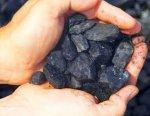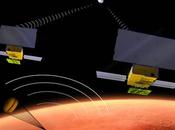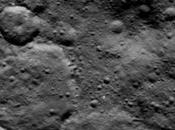 Paul Nicklen colpisce nel segno ancora una volta: dopo cinque World Press Photo e innumerevoli altri riconoscimenti, questa volta si è aggiudicato il primo premio assoluto del prestigioso Veolia Environment Wildlife Photographer of the Year. E lo ha fatto con un'immagine straordinaria (sopra) scattata nell'ambito del servizio "Velocità di fuga”, che potrete ammirare nel numero di novembre di National Geographic Italia in edicola il 31 ottobre.
Paul Nicklen colpisce nel segno ancora una volta: dopo cinque World Press Photo e innumerevoli altri riconoscimenti, questa volta si è aggiudicato il primo premio assoluto del prestigioso Veolia Environment Wildlife Photographer of the Year. E lo ha fatto con un'immagine straordinaria (sopra) scattata nell'ambito del servizio "Velocità di fuga”, che potrete ammirare nel numero di novembre di National Geographic Italia in edicola il 31 ottobre.
Nato e cresciuto tra gli Inuit del Canada, grande esperto dei ghiacci artici e antartici, Nicklen è ormai consacrato come uno dei migliori fotografi naturalistici al mondo: ha fotografato per primo le temibili foche leopardo sott'acqua, realizzando un servizio epico che gli è valso un premio World Press Photo e altri prestigiosi riconoscimenti; ha documentato la caccia al narvalo nell'Artico, creando scompiglio nel mondo naturalistico per la crudezza delle sue immagini, e ora ha realizzato questo straordinario reportage, basato su una recente scoperta scientifica che rivela il segreto della velocità dei pinguini imperatore, di cui potrete leggere i particolari nel numero di novembre del magazine.

Per realizzare questa immagine Nicklen si è immerso in un buco nel ghiaccio dove sapeva che i pinguini sarebbero riemersi ed è rimasto in attesa, attaccato al ghiaccio in superficie con le gambe e con le dita semicongelate, restando immobile per non spaventare i pinguini in arrivo. “Quando sono arrivati è stato fantastico", racconta. “Erano in centinaia, e si lanciavano fuori dall'acqua attraverso il buco proprio sopra di me. Un momento che mi sento incredibilmente fortunato di aver vissuto e che non dimenticherò mai".

A polar bear leaps between ice floes young.
Barents Sea, Svalbard, Norway.
A seagull flies in front of a huge iceberg. Svalbard, Norway.
Spring in the Arctic and melting.

A group of narwhals chasing a school of Arctic cod, in Lancaster Sound, Nunavut, Canada.

A baby penguin attentive to the arrival of their main predator:
leopard seals in Port Lockroy, Antarctic Peninsula.

A leopard seal than 500 kilograms, the top predator of the Southern Ocean in Antarctica.
A walrus returns to shore after a long dive for seafood in Svalbard, Norway.
A polar bear and her cria adrift on an ice floe in the Hudson Strait, Nunavut, Canada.

A beautiful animal, with an uncertain future, in Leif Fjorden, Spitsbergen, Norway.

Polar obsession
Young chinstrap penguins walk on an iceberg near Anvers Island, Antarctica.

Gentoo penguins make a first contact with the Antarctic seawater.
They have good reason to be wary of predators that lurk.
The penguins are important in the diet of leopard seals.

Narwhals in spring
During the spring the ice begins to melt and narwhals are pushing the cracks as they move.
The annual migration also brings within the scope of human hunters.

Gaviota blanca, Hornsund
A white seagull, a fjord in Spitsbergen, the largest island of Svalbard.
Glacial ice covers more than half the area of the archipelago, which is 400 miles (640 kilometers) north of mainland Norway.

Walrus, Svalbard
Both male and female walruses have tusks, canine teeth that actually use to help them leave the ice and also to break the ice and to breathe underwater.

Sea Elephant cub, South Georgia
An elephant seal pup plays in a freshwater stream in South Georgia, a place in the remote British South Atlantic.
Hundreds of thousands of southern elephant seals come to the island each summer to breed and raise their children.

Elephant Seals, St. Andrews Bay
fonte: Images Photo Gallery





